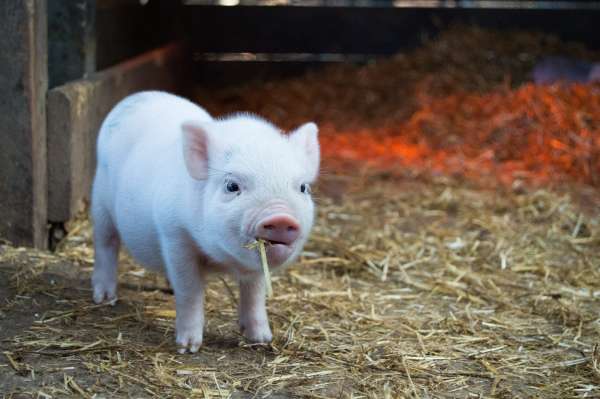Animal digestion and nutrition - animal activities
Lessons
# Digestive systems in animals
Students learn about the four types of digestive systems of various animals and create a model of one of the systems.
Files
# Avian activities
Students bake chicken treats for chickens, then determine how to tell which eggs have the most Omega fats.
Files
Teacher background
Animal agriculture produces high-quality protein in the form of dairy, meat, poultry, fish, and eggs, but much of that protein started as soy. In fact, global animal agriculture is the number one customer for U.S. soybeans.
Animals like chickens, pigs, turkeys, cattle and fish rely on nutrient-dense soybean meal to thrive. They need high levels of quality protein and digestible energy to grow, all found in soybean meal.
According to a study funded by the soy checkoff, the soybean meal fed in the U.S. goes to several segments of animal agriculture.
- Poultry eats about 64 percent.1
- Pigs consume nearly 24 percent.1
- Beef and dairy cattle use just over 10 percent.1
- The rest goes to aquatic farming like fish and shrimp, other farm animals, and companion animals like horses and pets.1
This unit helps explain the different types of digestive systems in animals and where protein from soybeans, carbohydrates from corn, and fats from both are digested. Other grains are also used in feeding animals, but not to as large an extent. To read more about the uses of soybeans, see the article “What Are Soybeans Used For?”
To learn more about animal nutrition, see the Animal nutrition e-learning course.
Next gen science standards
Science and engineering practices
- Developing and using models
- Analyzing and interpreting data
- Engaging in argument from evidence
- Obtaining, evaluating, and communicating information
Crosscutting concepts
- Patterns
- Cause and effect
- Systems and system models
- Structure and function
Disciplinary core ideas/content
- LS1A Structure and Function
- LS1B Growth and development of organisms
- LS1C Organization for matter and energy flow in organisms
- LS2B Cycles of matter and energy transfer in ecosystems
- LS4A Evidence of common ancestry and diversity
- LS4C Adaptation
- PS1A Structure of matter
- PS1B Chemical reactions






Share this